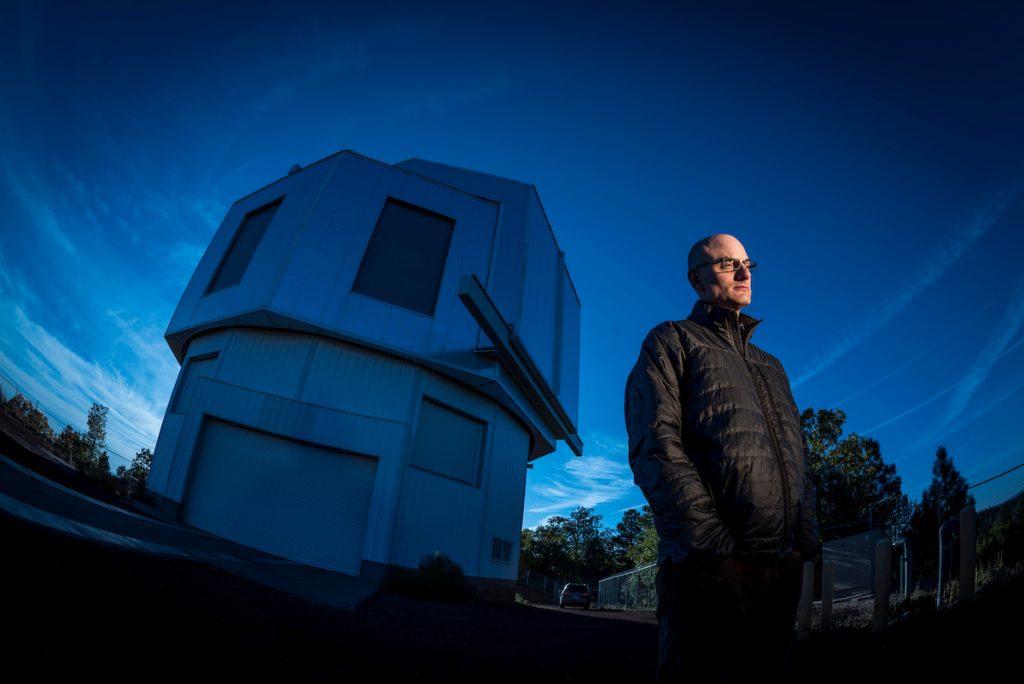By Heidi Toth
NAU Communications
Two weeks ago, astronomers in Hawaii saw an unfamiliar object in the night sky. Further observation led to a stunning realization—the fast-moving space rock, now named A/2017 U1, came from outside the solar system. It is the first recognized object to enter the solar system. According to NASA, astronomers are watching this object as it zooms through space, trying to learn as much as they can before its orbit takes it back out of the solar system and it disappears into the Milky Way.
Northern Arizona University astronomy professor David Trilling studies near-Earth objects that are house-sized or larger, focusing on the size, temperature and ability of the objects to reflect sunlight in an attempt to better identify future objects that may be headed to Earth instead of just near it. He is looking for ways to observe A/2017 U1 before it’s gone forever and spoke to NAU News about the significance of this discovery.
What do we know about this object?
We know this object originated somewhere outside our solar system and that it is headed to somewhere else outside our solar system. We also know from spectroscopic observations that its surface has a reddish color similar to objects from the outer regions of our solar system. But that’s it—we don’t know where it came from or precisely where it is headed, and we don’t know what it’s made of.
How do scientists know it originated outside the solar system? Why is that significant?
By connecting a series of measurements of this object on the sky we can determine its orbit and have determined that this object is “unbound”—it is not gravitationally part of our solar system, but rather an interloper.
This is significant because it’s a first—the first time that we have ever seen a specific thing in the sky that we can point to and say “that’s not from our solar system, but from somewhere else.” Among other things, it implies that planet formation must be commonly occurring elsewhere in the galaxy. Our current theoretical models of the formation of our solar system require the ejection of small comet-like bodies just like this—and I guess the same must be true for other planetary systems.
How close did it get to Earth?
Sixty times the distance to the moon. This is not particularly noteworthy for objects passing by the Earth. Only because of its unique orbit and origin are people paying attention to it.
How closely are you watching it? What have you learned about it in your observations?
The whole observational season for this object was just a few days, so at NAU we haven’t made any direct observations of it. In fact, only a few observatories around the world have been able to respond and make observations. However, we do have a proposed observation at the end of November— humanity’s last chance ever to observe this object as it makes its way out of our solar system.
Are more of these types of objects likely to show up?
Definitely! They have been proposed for years. The better our all-sky telescopic surveys become, the more of these we are likely to detect. Every one that we can observe will tell us about the prevalence and probability of planet formation elsewhere in the galaxy.



